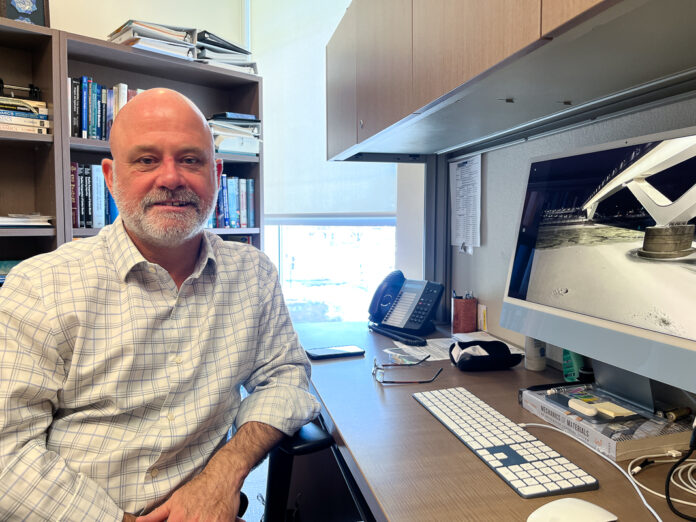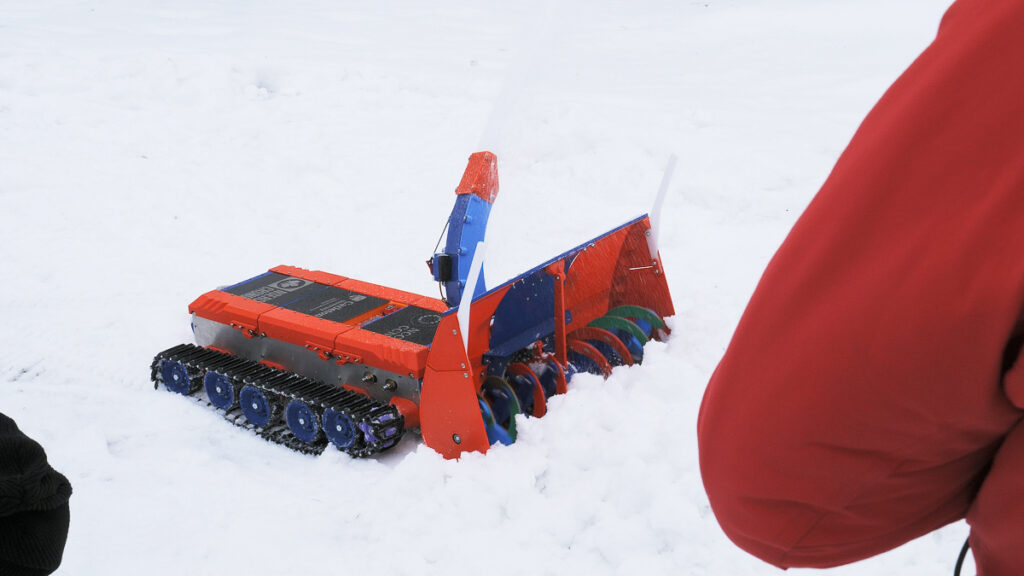
With the ongoing threat of climate change, the National Capital Commission (NCC) is looking for new strategies to build the resiliency of the beloved Rideau Canal Skateway.
Shawn Kenny is a geomechanics professor at Carleton University and a lead researcher in the NCC’s four-year partnership with the university.
Kenny along with Carleton University professors Jeremy Laliberté, Derek Mueller and Murray Richardson are researching ways in which the NCC can best maintain the Skateway. Through student and faculty-led research, the team has been collecting data on the canal through weather stations installed on the ice.
They have also tested a series of pilot programs aimed at introducing new strategies for building ice resiliency early in the season. The SnoBot, a semi-autonomous robot, is one of these initiatives.
The Charlatan sat down with Kenny to learn more about the ongoing research.
The Charlatan (TC): What is the goal of your research?
Shawn Kenny (SK): Our project is looking at how we promote the growth of the ice sheet early in the season so that we can allow the equipment and the conventional way in which the NCC operates and maintains the canal to get on the ice as soon as possible. We’re looking at how we can develop adaptation strategies to help promote that ice growth early in the season, and then also look at different pilot studies on how that may occur. Based on that data, we provide the NCC with evidence to support informed decision making as they move forward.
We’re looking at different types of adaptation strategies and tools that they may use in the future as we project going forward with climate change. We have some idea of what climate change may look like in 20 to 30 years, but there’s uncertainty on that. So, we’re trying to provide the NCC with pathways where they can decide the best way to approach [climate change] and hopefully maintain the resilience of the canal in the future.

SK: The main one that we’ve looked at over the past year is the SnoBot, which is a semi-autonomous robot. It’s more or less like a conventional snowblower, but it’s scaled down in size. It’s meant to go on the ice when it’s not safe for larger pieces of equipment that the NCC normally use to be on the ice. The idea is to manage the snow when it falls on the ice early in the season because snow cover itself is detrimental to the growth of the ice.
In the past two years, we’ve also done two other pilot studies. One was looking at using snow fan technologies that we see on ski hills to develop the snowpack. For water to freeze into ice, it needs a binding agent. It could be a snowflake, a piece of dust, a leaf or a twig, but once the water cools and it has something to bond with, you can then initiate that ice cover growth.
In the second trial, we looked at how efficient different techniques would be in flooding the canal. One strategy was pulling water from the canal and placing that water on top, and the other was just using a tanker filled with water. The idea was to assess how the quality of the water influenced the ice growth.
TC: What kind of work is being done on the canal now?
SK: It’s more about data collection at this stage and getting an understanding of how effective these systems are, and then thinking about how we can in the following years either improve upon or enhance them. We have a series of temperature gauges collecting information about the physical environment including the wind speed, solar radiation effects, temperatures of the air, the relative humidity of the air, how much rain has fallen, how much snow has fallen, the ice and the water itself.
TC: Are you hopeful that the canal will open again this season?
SK: It’s going to be fundamentally dependent upon the weather patterns. The short-term forecast over the next week isn’t promising, but maybe if there’s a cold spell coming in the long-term forecasts there’s still hope.
TC: What does it mean to be a part of this project?
SK: Well, it’s quite humbling in terms of the interest and the significance of the canal is even broader than Ottawa. I’ve received many emails and phone calls from different media outlets both across the province, from the U.S. and Europe about the Skateway. Whether it’s emails and inquiries about the canal, phone calls or handwritten letters, it’s just interesting to see a significant amount of input and interest in the canal and climate change. I’ve not had a research project that has had as much public interest as this.
It certainly makes me motivated to try to develop viable solutions that can address some of these climate change effects, and hopefully allow the canal to be resilient in terms of its Skateway in the future.
This interview has been edited for length and clarity.
Featured image by by Madison Eldridge/The Charlatan.





